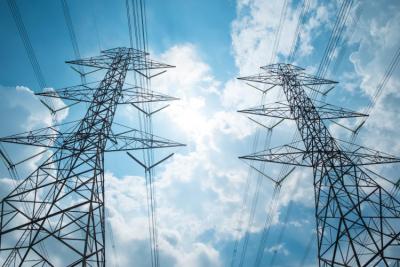Why the cost of capital for networks is likely to fall
- Akshay Kaul
- Director General, Infrastructure
- Publication type:
- Blog
- Publication date:
- Industry sector:
- Distribution Network,
- Transmission Network
Energy network companies’ cost of capital determines how much they have to pay their shareholders and bondholders to raise the billions of pounds needed to invest in the network—and how much it costs consumers who foot the bill.
Set the rate too high, and consumers end up paying too much. Set it too low and companies cannot raise the finance to deliver energy and other related services consumers need. As we start work on setting the next price controls for energy network companies from 2021, we have made it clear that the cost of capital is likely to be significantly lower.
Energy is an essential service and all of us pay for the costs of the pipes and wires on our bills. Network companies argue that they face significant risks. For example, we don’t know how many of us will buy electric vehicles and what impact this will have on demand. One million customers now have solar panels at home and this trend may continue, with more people wanting to use the networks to sell excess electricity. The outlook is not clear as the energy system is changing rapidly. What is certain is that the role that networks are expected to play will evolve.
Despite these challenges, investors see networks as low risk, because Ofgem’s stable, predictable regulatory regime protects companies from risks they cannot control. We set the current price controls in 2013 and since then the continued shift in financial markets following the 2008 financial crisis has seen investors willing to accept lower equity returns from longer-term investments in regulated infrastructure. Our regime has served customers well. Under our price controls, reliability and service quality have improved while the cost of transporting a unit of electricity around Britain has fallen by 17% since the mid-1990s, relative to the retail price index. Our network costs per unit of electricity are now lower than those in Germany or France.
Last week we set out our proposals for a new regulatory framework to bring in a tougher round of price controls from 2021. We can capitalise on our stable regulatory regime to ensure that consumers benefit from high levels of investment, innovation and reliability at the lowest possible cost.
Setting the right level for the cost of capital is a key part of this. In the current price controls we allowed a cost of equity (the rate of return for shareholders) of between 6% and 7%. But since the evidence shows that investors are willing to accept lower equity returns we have indicated a range for the next price controls of between 3% and 5% (if we were to set the rates today). This is the lowest rate ever proposed for energy network price controls in Britain. To set the cost of capital we also need to set the cost of debt for energy networks (the interest rate that a company pays its bondholders and banks). We have found that many companies are generally acquiring debt financing cheaper than we assumed. We want to refine how we set the cost of debt from 2021 so that consumers continue to benefit from the fall in interest rates, while enabling companies to continue to finance their investment programmes with confidence. In total we estimate this would result in savings of over £5 billion for household consumers (or about £15 - £25 per year on the dual fuel household bill).
“No businesses like to be told that they should be earning less money, but network companies provide a vital service to the public so their profits must be fair.”
Our proposals for a lower cost of capital are part of a range of reforms to our regulatory framework. We want to give customers a stronger voice in how the price controls are set and make wider use of competition for delivering network upgrades. The price controls will continue to fund the testing of innovation by network companies. We want the companies to see development of innovation as ‘business as usual’. We will target innovation funding to the big research and development challenges for the networks such as accommodating increasing use of electric vehicles, decarbonisation of heat and the move to more locally sourced energy.
Ultimately our price controls need to deliver best value for customers. They must enable the companies to raise the finance they need while making sure their returns reflect the low risk environment in which they operate.
No businesses like to be told that they should be earning less money, but network companies provide a vital service to the public so their profits must be fair. I have no doubt that we are in for tough discussions with the companies. However we expect them to work with us to agree a fair price control settlement so they can manage the challenges they face and keep improving their service for customers.
Find out more about the energy network and performance under the current price controls in our fast facts: Network price controls and you.
Your views
We’re consulting on our price control framework proposals until 2 May. Have your say or register to attend our upcoming events in March and April.
Subscribe
You can stay up to date with key updates on the price control proposals as they develop and other Ofgem news by signing up to our Alerts & Briefings.

